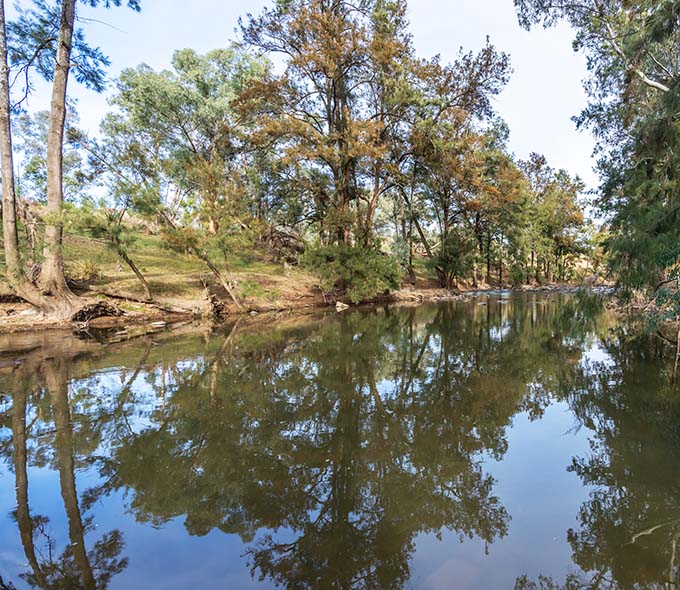Aboriginal community's input in long-term water plans
Aboriginal cultural values will be embedded in NSW long-term water plans as part of a 5 year review process now underway.
Long-term water plans were developed in 2020 for 9 river catchments across inland New South Wales to guide the management of water for the environment over the longer term. While the plans aim to draw together local, traditional, and scientific knowledge, a recent review identified opportunities for improved inclusion of Aboriginal values and objectives.
In response to this review, NSW Department of Climate Change, Energy, the Environment and Water has commenced a program of engagement with the traditional custodians, Mowgee mayiny (or Mudgee people) of the Cudgegong River valley.
First Nations Engagement Officer Cass Slade-Potts said, 'the community-led process provides the community with an opportunity to identify cultural assets and make decisions about how cultural information is used and reflected in the long-term water plan.'
'We are working with the Local Aboriginal Land Council and Traditional Owner groups across the Wambuul-Macquarie and Cudgegong River catchments to make the long-term water plan more accessible to the people who will be contributing to it.'
'Through these groups, we can gauge community perspectives on the type of information to be included, the use of language as part of the plan and how traditional knowledge will be included.'
'Together with the community, we have identified a need for an Aboriginal cultural heritage assessment that will get people out on Country, surveying the river landscape and capturing the values and assets that may then be included in the long-term water plan.'
'This may include identification of scarred trees, birthing trees, artefacts, middens and other areas of significance.'
'Throughout the process, the Mowgee mayiny (Mudgee people) will decide what information they wish to share and how it is used to ensure autonomy over cultural values, assets, and decisions.'
'Our aim is to ensure Aboriginal cultural values are embedded in long-term water plans, not only as a separate chapter but as a narrative that flows through each plan and helps inform the future management of water for environmental and cultural outcomes.'
